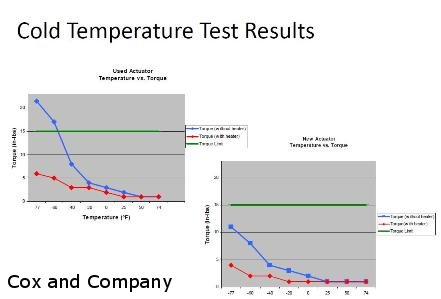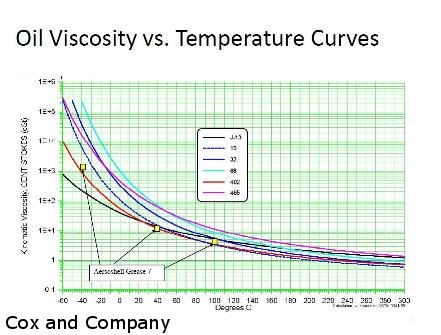New York City-based Cox and Company plans this spring to begin flight testing a CRJ100/200 flap actuator resistive heating system this spring that will be a low-cost fix to the years-long "soft jam" failures that have plagued the regional jet's Eaton Aerospace-built "flex drive" flap actuators in winter operations.
The development comes as operators continue to wrestle with flap failures despite a programme instituted this past summer by Bombardier and Eaton to upgrade the actuators, eight of which are required on each aircraft. The CRJ100/200 has two single-panel flaps on each wing, as shown on Bombardier-provided picture below.

Flex drive actuators use sleeved braided stainless steel cables daisy chained between the eight actuators to drive the flaps in unison, a lighter weight solution than traditional drive systems. The technology has proven problematic in several applications however, including Eaton drives supplied to Bombardier for the CRJ aircraft and to Gulfstream for its G100 business jet, particularly as the flex drives and actuators age. Bombardier switched designs for its larger CRJ700s/900s.
Regulators have determined that the flap failures can occur if the torque supplied by the flex drive to move the flap is greater than 15 in-lb (1.7Nm), a threshold that worn actuators have been shown by Cox to reach at temperatures below -50° F. Torque values for new actuators at those temperatures are below the threshold, but experts are not sure of the effect of the daisy chain configuration in exceeding the value. Existing directives require operators to change out actuators that fail a cold-temperature torque test.
The plot on the left shows torque required versus temperature for a used actuator (blue line) as compared to the 15 in-lb threshold (green line). The red line shows the reduced torque required to move a heated actuator. The plot on the right shows the performance for a new actuator. In both cases, adding heat to the actuator lowers the torque required to less than 6 in-lb down to temperatures of -77° F. The temperature scale runs from +74° F on the far right to to -77 F on the far left.

Bombardier has proposed a series of actuator fixes to the problem over several years, including different grease, mechanical tolerances and most recently, new seals to keep moisture out and grease in, processes that were thought to be at the root of the problem. Actuators with the new seals were made available last summer for on-wing replacement, though the entire fleet of more than 1,000 aircraft have not yet been upgraded. "As these upgrades proceed, we expect the number of flap interruptions to reduce significantly," says a Bombardier spokesman.
Cox experts however say the behaviour of the actuators in their labs show agreement with the characteristics of the grease at low temperatures, leading them to believe that moisture may not be the root cause of the jams. By placing a resistive heater on the actuator, the company is able to reduce the torque to 6in-lb (0.7Nm) or lower down to -77° F for new or used actuators.
The plot below shows that the viscosity of the grease used in the flap actuators increases in the same manner as actuator torque required with decreasing temperature.

A review of service difficulty reports (SDRs) filed by CRJ operators this winter season reveals at least 29 SDRs related to flap failures, most requiring crews to declare an emergency, divert or return for landing, in some cases with airport fire and rescue positioned on the runway.
In one high profile incident in 2006, an Air Canada Jazz CRJ200ER performed a missed approach at Prince George, British Columbia, only to find the flaps would not retract from the 45° position. The aircraft ran dangerously low on fuel flying to its alternate airport due to the high drag conditions with the flaps down. The Air Line Pilots Association (ALPA) has expressed concerns to the FAA that such diversions in icing conditions could pose "serious" risk due ice attaching to the flap surfaces.
It's not clear whether any of the reworked actuators have failed in the most recent cases, however.
Those actuators are included in a final US FAA airworthiness directive (AD) issued today mandating a variety of onerous and expensive requirements on CRJ operators to prevent flap failures, some that can be removed if the improved actuators are to be installed. The FAA did not specify whether the AD requirements might be removed if Bombardier later develops a permanent fix.
In addition to reduced or zero-flap landing simulator training for pilots every year, the AD mandates certain repetitive mechanical inspections as well as flight manual revisions and operational procedures to deal with the possibility of the flaps becoming stuck in any configuration.
The Cox alternative, which could likely become an alternate means of compliance for satifying the AD once the company gains Transport Canada certification for the fix in July, includes a clamp-on, low-power resistive heater for each actuator. Wiring runs through the wing structure connecting all units to a single control box and to a cockpit-mounted display that lets pilots monitor the operation of the system.
Originally developed for Gulfstream for the G100 business jet programme nearly five years ago, the CRJ system would turn on below 50° F, maintaining the actuators at a temperature that Cox engineers say would virtually eliminate all soft jams that have plagued the aircraft during winter months.
Bought in volume, Cox says the systems would cost "less than one-half" the $50,000 price of one new flap actuator. Installation time is expected to be less than 30h per aircraft.
Source: Air Transport Intelligence news
















